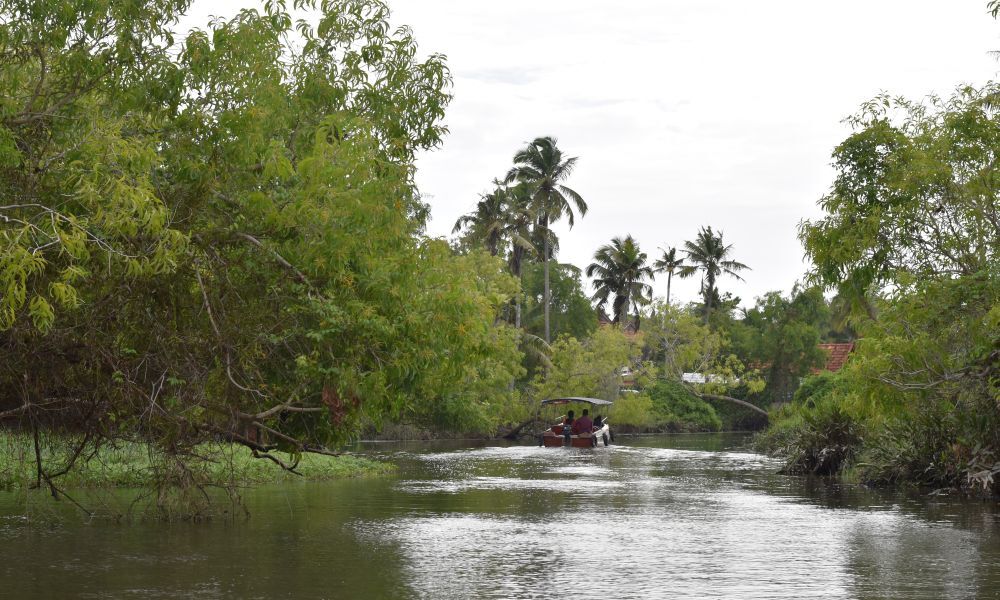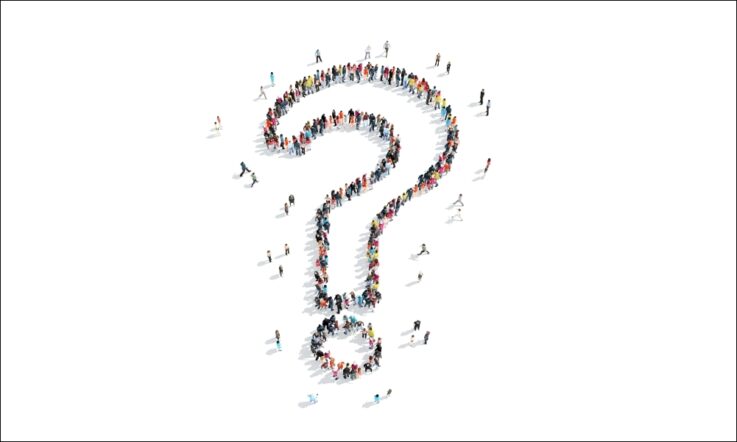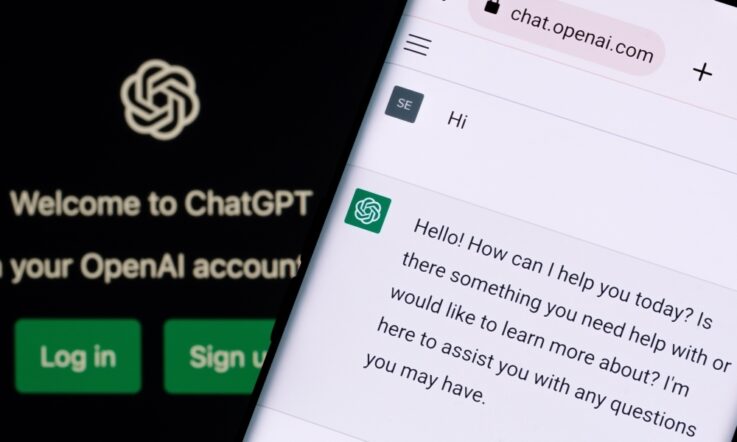Assessment is an important part of school education – it helps teachers establish where students are in their learning and make informed decisions about suitable next steps. In this reader submission, Shilpi Banerjee and Ronita Sharma from Bangalore’s Azim Premji University discuss key principles in designing and using authentic assessments.
Traditional methods of testing using fixed assessment formats and time limits are often critiqued for promoting rote learning, rather than encouraging deeper understanding and critical thinking. Authentic assessments offer a way to assess higher order competencies like problem solving, reasoning, analysis, and creativity.
Authentic assessments give students an opportunity to use and apply their skills, knowledge and understanding. A sense of this kind of learning across different stages of schooling can be understood through the broad aims of school education which emphasise a commitment to democracy and the values of equality, justice, freedom, and independence of thought and action.
Unlike traditional tests, authentic assessments not only focus on the product of learning but also support the process of learning by providing feedback and involving students in assessing both their own and their peers’ efforts. Project-based learning (PBL) is one frequently practiced method for doing authentic assessments (Bell, 2010). Such assessments give an excellent opportunity for integrating assessment as learning, assessment for learning and assessment of learning.
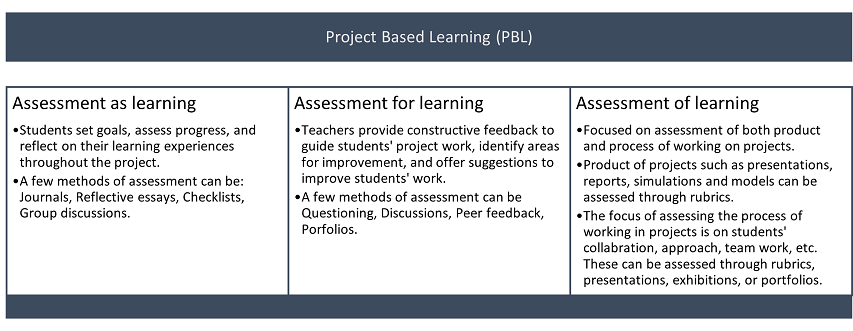
Assessing your assessment
Authentic assessments can be designed through:
- Identifying a set of learning outcomes across subjects which have a better scope of assessing through authentic approaches,
- Designing authentic tasks (projects, presentations, debates, portfolios, simulations, experiments, role plays, artistic performances, etc.),
- Designing appropriate scoring scheme (rubrics, rating scales, checklists, anecdotal records).
Let us take an example of a PBL project which is used in one of the schools in Kerala. This is an interdisciplinary project comprising of learning outcomes from Science, Social Science, Language and Mathematics at the upper primary stage. The duration to complete this project is 6 months and will be conducted in a phase wise manner. The project involves conducting a study on the extinction of mangrove forest in the students’ locality and submission of a 2000-word report.
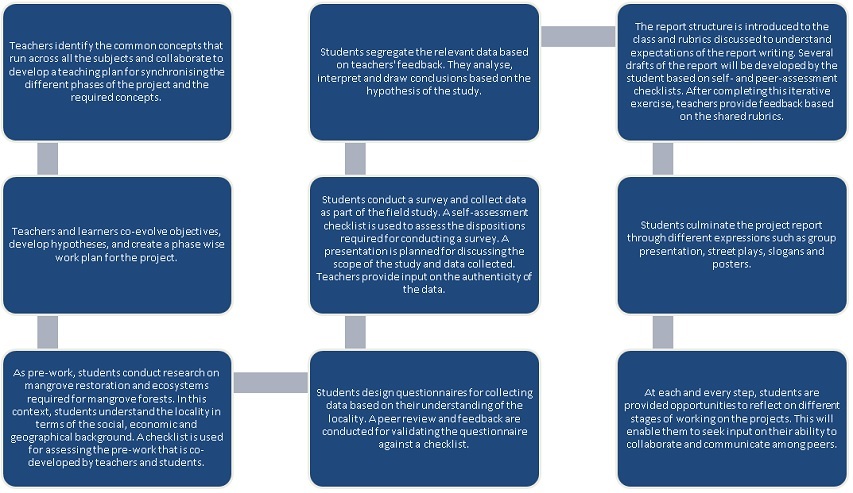
While the importance of authentic assessments is mostly appreciated among the teacher community, there are several misconceptions on both the design and execution of such assessments. This checklist can be used to examine the authenticity of assessments.
Does your authentic assessment:
- Assess subject specific knowledge, skills, and dispositions?
- Use multiple modes of assessment (debates, presentations, discussions, etc.)?
- Provide multiple opportunities and experiences to students?
- Establish connections between real-world experiences and school-based ideas?
- Involve collaboration?
- Provide constructive feedback to both teacher and student during the process of learning and assessment?
- Help to gather multiple evidences of students’ learning?
Using teachers’ time efficiently
One of the challenges often faced by teachers is managing time while conducting authentic assessments. A few key principles can be used to help overcome such challenges:
- Design authentic assessment by exploring the common concepts that cut across different subjects in the same grade. This will help in reducing the teaching load and time through systematic planning of the teaching and learning process across various subjects.
- Plan group assessments/projects and share checklists/rubrics for enabling self- and peer-assessment. This will save teachers’ time for assessing and providing regular feedback to students. Moreover, such an approach will address a holistic assessment through assessment, of, for, and as learning.
- Enable a culture of building on the experiences of the teacher community. This will facilitate a smooth and seamless teaching and learning experience for both students and teachers.
References and related reading
Bell, S. (2010). Project-based learning for the 21st century: Skills for the future. The Clearing House, 83(2), 39-43. https://doi.org/10.1080/00098650903505415
Wiggins, G. (2011). A true test: Toward more authentic and equitable assessment. Phi Delta Kappan, 92(7), 81-93. https://doi.org/10.1177/003172171109200721
Think about your own assessment practice. What is the aim? How does this inform your future planning? How often do you give students an opportunity to use and apply their skills, knowledge and understanding in open-ended tasks and projects?
